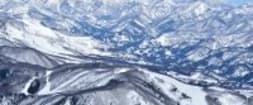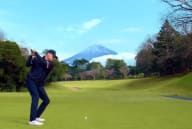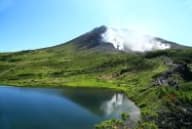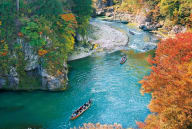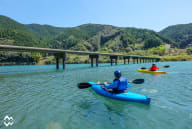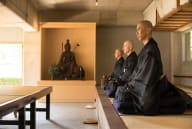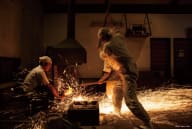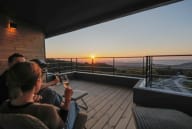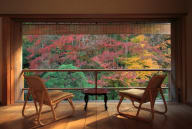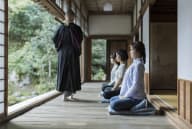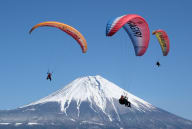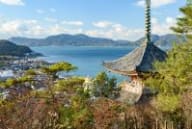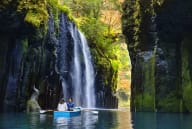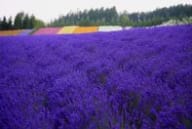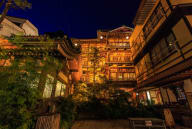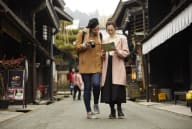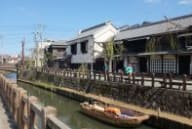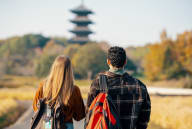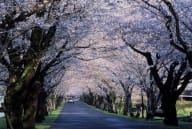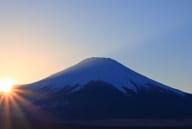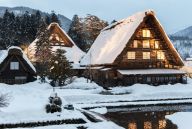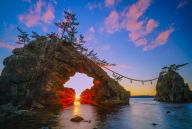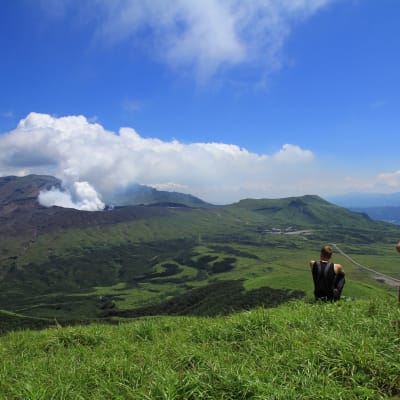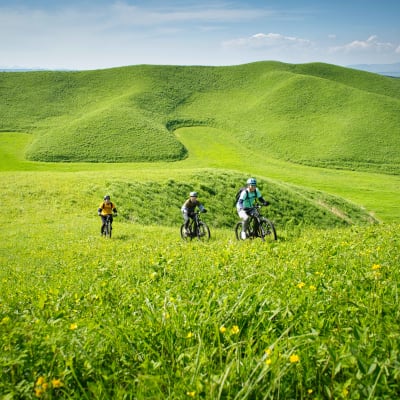Use the
Planning a Trip to Japan?
Share your travel photos with us by hashtagging your images with #visitjapanjp

Kyushu, Japan’s most volcanically active main island, is home to 17 active volcanoes. These include Sakurajima, the country’s most active, and Mt. Aso, one of the largest in the world. Centuries of eruptions have shaped both the land and its ecosystems.
Volcanoes can be destructive, but they also sustain life. Weathered ash creates nutrient-rich soil that supports wild vegetation and agriculture, making the region especially fertile. Beneath the surface, geothermal activity provides hot springs and renewable energy, offering comfort and utility drawn directly from the Earth’s heat.
This volatile environment demands resilience and adaptation. Forests, grasslands, and cultivated fields have come to thrive despite the harsh conditions, while mineral-rich waters and controlled burnings sustain local farming. The region embodies the GREEN×EXPO 2027 subtheme of Co-adaptation, showcasing how people live alongside and work with nature in safe and sustainable ways. Across Kyushu, both people and wildlife continue to thrive by moving in step with the rhythms of the land.
Hiking among the azaleas of the Kuju Mountains

In western Oita Prefecture, the Kuju Mountain Range is known for its volcanic peaks, expansive grasslands, and seasonal displays of color. From mid-May to mid-June, slopes across the range are covered in the vivid pink of Miyama Kirishima azaleas, a native species that thrives in volcanic terrain. These blooms sweep along the ridgelines, forming one of Japan’s largest azalea colonies, and have been designated a Natural Monument of Japan.
Conservation plays a key role in protecting these flowers, which depend on the regular clearing of undergrowth. In the past, grazing cattle and horses naturally kept competing plants in check. Today, this work is done by hand, with areas such as Unzen-Amakusa National Park offering volunteer programs where visitors help maintain the blooms.

Hiking Mt. Taisen is one of the best ways to see these azaleas. Starting from the Ikekubo trailhead or Gokurakuji Temple, the trails ascend through dramatic landscapes where vivid pink blossoms blanket the slopes. From the summit, the Kuju peaks stretch into the distance, a panoramic reward for those who make the climb through this ever-changing volcanic landscape.
Exploring Mt. Nakadake, Aso-Kuju National Park

Straddling the prefectures of Kumamoto and Oita, Mt. Nakadake is one of Japan’s most active volcanoes and the dynamic heart of Aso-Kuju National Park. Its eruptions have shaped the landscape, carving imposing peaks, creating steaming vents, and forming the vast Aso caldera. With a circumference of over 100 kilometers, the caldera ranks among the largest in the world.
Visitors can explore this volcanic terrain on guided treks to Nakadake’s 1,506-meter summit or Takadake, the highest peak in the caldera at 1,592 meters. Those preferring self-guided routes can take the Mt. Kuroiwa and Mt. Sensui Hiking Trail, which crosses rolling grasslands and challenging ridges formed by centuries of volcanic activity.
After hiking, take the time to enjoy the area’s other attractions. Hot spring towns around Aso, like Sujiyu and Kurokawa, draw mineral-rich waters to their baths, offering relaxation with mountain views. Nearby, Aso Farm Land blends wellness and recreation activities for families. Children can enjoy slides, obstacle courses, and a petting zoo, while parents unwind in hot spring baths.
Learning from the land at the Aso Grassland Conservation Center

Covering much of central Kyushu, Aso-Kuju National Park is defined by sweeping grasslands and rugged volcanic peaks that surround the expansive Aso caldera.
Within these grasslands, the Aso Grassland Conservation Center in Kumamoto serves as a hub for learning and preservation. Visitors can take part in search-and-observe events for local wildlife and flora, take in seasonal views of the grasslands from the observation deck, and join hands-on workshops using Japanese pampas grass to create traditional crafts.

The center is also the operational base for noyaki, a controlled burning carried out each spring to maintain the grasslands. Research into the soil suggests the practice has been ongoing for around 10,000 years. Each spring, training seminars and preparation meetings take place before the burns, which promote fresh growth, protect biodiversity, and keep grasslands from being overtaken by forest. Around 2,000 trained volunteers participate annually through programs run by the Aso Green Stock Foundation.

Although participation requires training, it’s possible to observe the process and gain firsthand insight into how careful management sustains Aso’s iconic scenery and keeps its grasslands thriving for generations.
Healing and heat at Unzen Onsen

In the mountains of Nagasaki, Unzen Onsen is a hot spring town famed for its acidic sulfur springs and striking volcanic setting. Welcoming visitors for over a century, the area became a part of one of Japan’s first national parks in 1934 and is recognized for its natural beauty and cultural significance.
At the heart of the resort lies the Unzen Hells, a landscape of over 30 steaming vents and boiling pools that earned their name for their otherworldly appearance. Briefly used as a site to execute Christians in the 1600s, these geothermal fields now provide comfort and healing.

The volcanic forces that heat Unzen’s springs have also enriched its soils, shaping both the scenery and local life in the area. There are traditional ryokan inns with open-air baths where the mineral-rich waters are purported to ease fatigue and improve skin health. Alternatively, visitors can join seasonal harvests of a wide array of crops, where vegetables are grown in the fertile volcanic earth using local seeds and traditional techniques that have been passed down through generations.
Remembering resilience at the Unzen Disaster Memorial Hall

Beneath the beauty of Unzen-Amakusa National Park lies a history marked by some of Japan’s deadliest volcanic events. The most catastrophic came in 1792, when a dome collapse triggered landslides and a megatsunami, claiming over 14,000 lives. In 1991, after nearly two centuries of dormancy, the volcano awoke again.
The eruption drew international attention, with researchers and journalists venturing dangerously close to document the unfolding drama. On June 3, pyroclastic flows more powerful than expected swept the slopes, killing 43 people instantly. Fifteen years later, a melted television camera, its tape miraculously intact, was recovered from the volcanic debris. The footage, which captured the moment, remains a valuable yet haunting reminder of Unzen’s power.

You can see the camera at the Unzen Disaster Memorial Hall, where there are immersive exhibits, an eruption simulator, and the Buried Houses Preservation Park. Together, the exhibits and facilities transform tragedy into education, underscoring the respect this landscape demands.
Key takeaways
Kyushu’s volcanic landscapes tell a story of resilience, coadaptation, and harmony with nature. From conserving rare blooms and grasslands to thriving in the foothills of active peaks, the region reflects the GREEN×EXPO 2027 subtheme of Co-adaptation, showing how communities have learned to live with and adapt to volcanic forces, turning challenges into opportunities for life to flourish.


©Expo 2027












